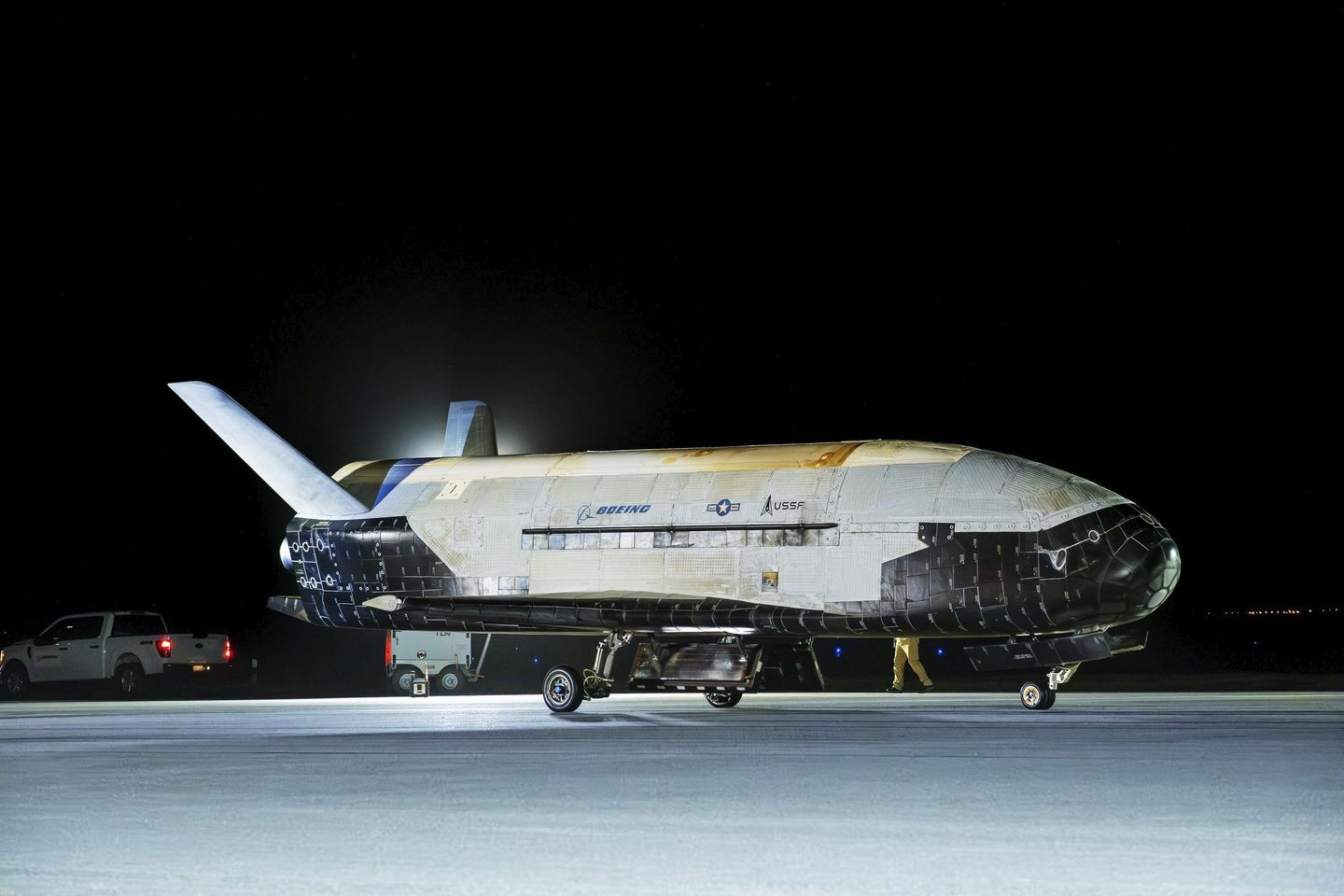
The Space Force on Thursday conducted the latest launch into space of the X-37B space plane, known formally as the orbital test vehicle.
The launch from the Kennedy Space Center in Florida was the eighth mission for the space plane that analysts say may serve as a future platform for the Space Force’s so far nonpublic counterspace weapons.
The Space Force said in a statement that the plane will conduct a variety of tests and experiments during its mission.
“These operational demonstrations and experiments comprise of next-generation technologies including laser communications and the highest performing quantum inertial sensor ever tested in space,” the statement said.
The mission will conduct laser communications demonstrations involving proliferated commercial satellite networks in low earth orbit, the Space Force said.
Although Space Force did not say so, space lasers can also be used to attack satellites.
Space-based lasers also could be part of President Trump’s plan for a national missile defense dubbed Golden Dome for America.
Lasers are regarded by experts as a key antidote to China’s high-speed hypersonic missiles.
The latest X-37B mission’s “laser communications demonstration will mark an important step in the U.S. Space Force’s ability to leverage proliferated space networks as part of a diversified and redundant space architectures,” said Chief of Space Operations Gen. Chance Saltzman.
China obtained information on the X-37 in the early 2000s from Greg Chung Dongfang, a Boeing engineer who was convicted of spying for Beijing. Court papers in the Chung case revealed that Chung held internal Boeing documents at his home, including a report labeled “Boeing proprietary” called “X-37 space plane overview.”
In 2010, Chung was convicted of economic espionage and acting as an unregistered agent for China. He was sentenced to 15 years in prison.
China launched its first space plane that appears similar in shape to the X-37 in 2020, likely with the help of stolen U.S. technology.
A Chinese technical journal, Winged Missiles Journal, stated in a 2014 article that the X-37B “possesses robust space warfare capabilities, enabling it to execute diverse attack missions against low-orbit targets.”
“The X-37B can serve as an anti-satellite platform carrying hard and soft kill weapons such as laser weapons, microwave weapons, kinetic weapons, contaminants, and net-deploying systems,” the report said.
The plane can rapidly maneuver near space targets and employ onboard weapons for attack, using a robotic arm, directed energy strikes or kinetic attacks, the article said.














